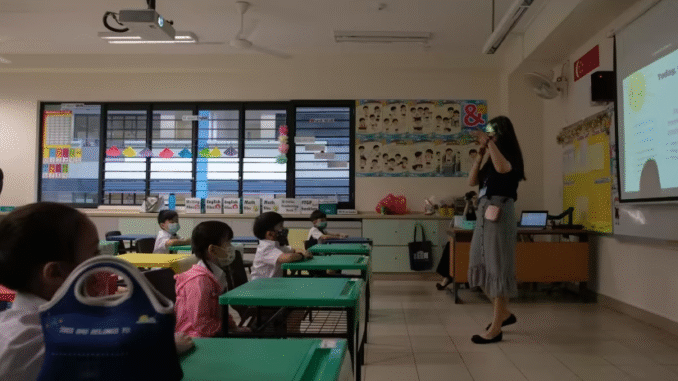
Reimagining the Classroom: How Modern Technology Is Transforming Education
Education has always been a cornerstone of human progress. From chalkboards to digital whiteboards, from heavy textbooks to e-books, the classroom has continually evolved. But the 21st century has ushered in a transformation unlike any other: the integration of modern technology into every aspect of learning. Today, technology is not just a tool in the classroom—it is reshaping what a classroom is, how students learn, and how teachers teach.
The Traditional Classroom vs. the Modern Classroom
Traditionally, classrooms followed a one-size-fits-all approach. Teachers stood at the front of the room, lecturing while students passively absorbed information. Assessment was largely based on memorization and standardized testing. While this model worked for decades, it did not always cater to individual learning styles, pace, or interests.
Modern classrooms, on the other hand, are dynamic and interactive. Technology enables personalized learning, real-time feedback, and a more engaging experience for students. Rather than being limited to a physical space, learning can now happen anywhere, anytime—thanks to digital platforms.
The Rise of Online and Hybrid Learning
One of the most significant changes brought by technology is the rise of online and hybrid learning models. Platforms like Google Classroom, Microsoft Teams, and Zoom became essential during the COVID-19 pandemic, and many schools have continued using them even as in-person learning resumed.
Online learning allows students to access lectures, assignments, and resources at their own pace. It also makes education more inclusive, offering opportunities to students in remote or underserved areas. Hybrid models—where students learn both in-person and online—provide flexibility and cater to diverse learning preferences.
Personalized Learning Through AI and Analytics
Artificial intelligence (AI) is playing an increasingly important role in education. AI-powered platforms can assess a student’s strengths and weaknesses, then adapt the curriculum to suit their individual needs. For example, if a student struggles with algebra but excels in geometry, the system can adjust the difficulty level and offer targeted exercises.
Learning analytics also give educators valuable insights into student progress. Teachers can monitor participation, track performance, and intervene early if a student is falling behind. This data-driven approach helps create more effective and personalized learning experiences.
Interactive and Immersive Learning Tools
Modern educational technology includes a wide range of interactive tools designed to make learning more engaging. Smartboards, tablets, and touchscreen devices allow students to interact directly with digital content. Educational apps and games make subjects like math and science more fun and accessible.
Even more groundbreaking is the use of Virtual Reality (VR) and Augmented Reality (AR) in classrooms. VR headsets can take students on virtual field trips to historical landmarks or the depths of the ocean. AR can bring textbook diagrams to life, allowing students to explore 3D models of cells, planets, or historical artifacts.
These immersive tools don’t just enhance understanding—they spark curiosity and imagination, making learning a truly memorable experience.
Enhancing Collaboration and Communication
Technology has also revolutionized how students and teachers communicate and collaborate. Collaborative tools like Google Docs, Padlet, and discussion forums allow students to work together on projects in real time, regardless of their physical location.
Teachers can provide instant feedback, and students can ask questions or participate in discussions even outside school hours. This ongoing communication fosters a more supportive learning environment and encourages active participation.
Expanding Access to Quality Education
One of the most powerful impacts of technology in education is its ability to bridge gaps. Students from rural or economically disadvantaged backgrounds can now access the same quality educational resources as those in well-funded schools.
Massive Open Online Courses (MOOCs) offered by platforms like Coursera, edX, and Khan Academy make top-tier education available for free or at low cost. Students can learn coding, data science, art, or business skills from world-renowned institutions, regardless of their location or financial situation.
Empowering Teachers with New Tools
While students benefit greatly from educational technology, teachers are equally empowered. Modern tools help educators streamline administrative tasks, plan lessons more efficiently, and create more engaging content.
Learning Management Systems (LMS) allow teachers to manage grades, attendance, assignments, and communications all in one place. AI tools can help with grading or provide recommendations for differentiated instruction. Moreover, professional development is more accessible through webinars, online communities, and instructional videos.
Rather than replacing teachers, technology acts as an assistant—freeing them to focus more on mentoring and inspiring students.
Challenges and Considerations
Despite its many benefits, the integration of technology into education is not without challenges. The digital divide remains a major concern. Not all students have reliable internet access or devices at home. Without addressing this gap, technology can unintentionally widen educational inequality.
Additionally, overreliance on screens can affect students’ physical and mental well-being. It is crucial to strike a balance between digital and offline activities to ensure holistic development.
Privacy and data security are also important issues. As educational platforms collect more data on students, schools must ensure that this information is protected and used ethically.
The Future of Education
As technology continues to evolve, so too will the classroom. Future trends may include AI tutors, blockchain for secure credentialing, and even more advanced immersive experiences. What’s clear is that the role of the teacher will remain vital—guiding, mentoring, and inspiring students in an increasingly digital world.
Educators and policymakers must work together to ensure that technology enhances, rather than replaces, the human elements of education. The goal should always be to create learning environments that are inclusive, equitable, and adaptable to the needs of all learners.
Conclusion
The classroom of the future is no longer confined to four walls. With the help of modern technology, education is becoming more personalized, engaging, and accessible than ever before. While challenges remain, the opportunities are vast. By embracing these changes thoughtfully, we can build a learning environment that prepares students not just for exams—but for life.
